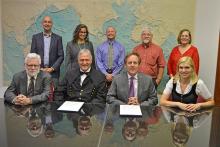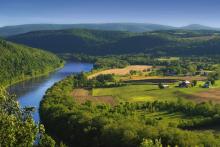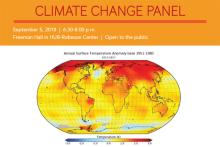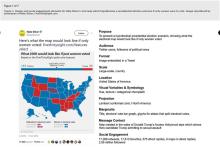'The Bearded Lady Project' photography exhibit, which highlights women in science and draws attention to issues they face, is now open in the Earth and Mineral Sciences Museum & Art Gallery.
Schreyer Honors College and College of Earth and Mineral Sciences graduate Patrick Stephens models three-dimensional terrain around the world while continuing to build his own cartography business.
An exhibition held Oct. 1-6 will showcase the research and materials for a new course that investigates a select group of rocks and minerals used in the production of art between the Prehistoric Era and Early Modern period.
The College of Earth and Mineral Sciences (EMS) has entered a memorandum of understanding (MOU) with Montan University Leoben, in Leoben, Austria, to develop a student exchange partnership that will link two educational institutions known for their expertise in sustainable approaches to materials sciences, mining and geosciences, with additional partnership opportunities with Penn State’s Earth and Environmental Systems Institute.
A more comprehensive way to understand the fracturing of Greenland's Helheim Glacier may now be possible thanks to a $489,000 grant from the Heising-Simons Foundation to a team of Penn State researchers to launch a feasibility study.
The National Science Foundation has awarded a $3 million grant to an interdisciplinary team of Penn State researchers to create a new graduate program that will train students to find solutions to real-world problems facing Food-Energy-Water (FEW) systems.
UNIVERSITY PARK, Pa. — Warming that took place over thousands of years following Earth’s last ice age dramatically changed vegetation on much of the planet, according to a new study.
Michael Mann, distinguished professor of atmospheric sciences and director of Penn State's Earth System Science Center, is the 2018 recipient of the American Geophysical Union's Climate Communication Prize.
Penn State will host a panel discussion on climate change topics related to Earth observations, Earth system modeling and policy on Wednesday, Sept. 5, in the Freeman Auditorium of the HUB-Robeson Center on the University Park campus. Panel discussion will start at 6:30 p.m. followed by a question-and-answer session.
As the 2016 presidential election was heating up, the statistical news website FiveThirtyEight released a projection map asking what if only women voted; it quickly went viral on social media and was viewed millions of times. That viral cartography event, and what quickly followed, is the subject of research conducted by Anthony Robinson, assistant professor of geography..











